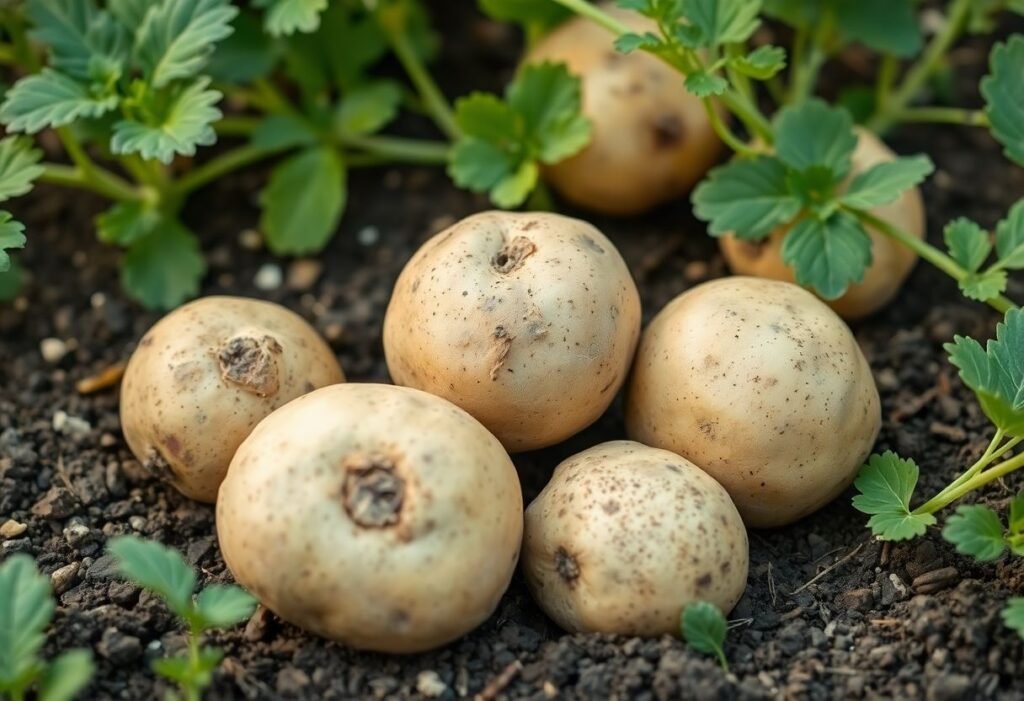Introduction to Potato Fertilization
Potatoes are a staple in many American households, prized for their versatility and comfort food status. Whether mashed, baked, or fried, they hold a special place in our hearts and stomachs. However, to achieve a fruitful harvest, knowing when to fertilize potatoes is crucial. Proper fertilization not only ensures a bountiful crop but also enhances the quality of the potatoes. This article will guide you through the essentials of fertilizing potatoes, making you a knowledgeable gardener.
The Right Time to Fertilize Potatoes
To understand when to fertilize potatoes, it’s important to know their growth cycle. Potatoes thrive in warm conditions, and the timing of fertilization is key. Typically, the first application should occur as soon as the plants begin to sprout and develop their first set of leaves. This usually happens a few weeks after planting, so it’s vital to keep an eye on your garden.
Choosing the Best Fertilizers for Potatoes
When discussing fertilizing potatoes, selecting the right type of fertilizer is essential. Organic options, such as compost, can significantly enrich the soil and promote healthy growth. Alternatively, chemical fertilizers can also be beneficial, as they tend to be more readily absorbed by plants. Understanding the nutritional needs and pH level of your soil will help in making informed choices about the right fertilizers.
The Importance of Nutrients in Fertilization
Fertilizing potatoes isn’t just about applying fertilizer; it’s also about providing the right nutrients. Key elements include nitrogen, phosphorus, and potassium. Nitrogen aids in leafy growth, phosphorus promotes root development, and potassium enhances overall plant health. A proper balance of these nutrients is critical for optimizing your potato harvest and ensuring a robust crop.
Signs of Nutrient Deficiency in Potatoes
To effectively fertilize potatoes, it’s crucial to recognize the signs of nutrient deficiency. Yellowing leaves, stunted growth, and discolored tubers can all indicate that your plants are lacking essential nutrients. If you observe these symptoms, applying fertilizer promptly will help rejuvenate your plants and prevent further issues.
Why Fertilization Matters for Yields
Fertilization is vital in achieving high yields. Properly fertilizing potatoes not only increases crop productivity but also enhances the taste and quality of the tubers. Well-nourished potatoes are better able to withstand diseases and pests, leading to a more successful harvest.
Best Practices for Fertilizing Potatoes
To maximize your potato harvest, adhere to some best practices in fertilizing potatoes. Fertilization should typically be performed in two stages: the first application at the beginning of growth and the second when the plants start to flower. Additionally, regularly monitoring the plants and adjusting fertilizer application based on their needs is crucial to ensure they thrive throughout their growth cycle.
Conclusion
Knowing when to fertilize potatoes is essential for every gardener aspiring to grow thriving potato plants. By investing your time and effort into proper fertilization, you’re not only enhancing your yield but also fostering the delicious flavors of homegrown potatoes. Embrace the art of gardening and enjoy the fruits of your labor!
Disclaimer
This article is for informational purposes only and does not substitute for professional agricultural advice. It’s recommended to consult an expert in fertilization for optimal results.

















